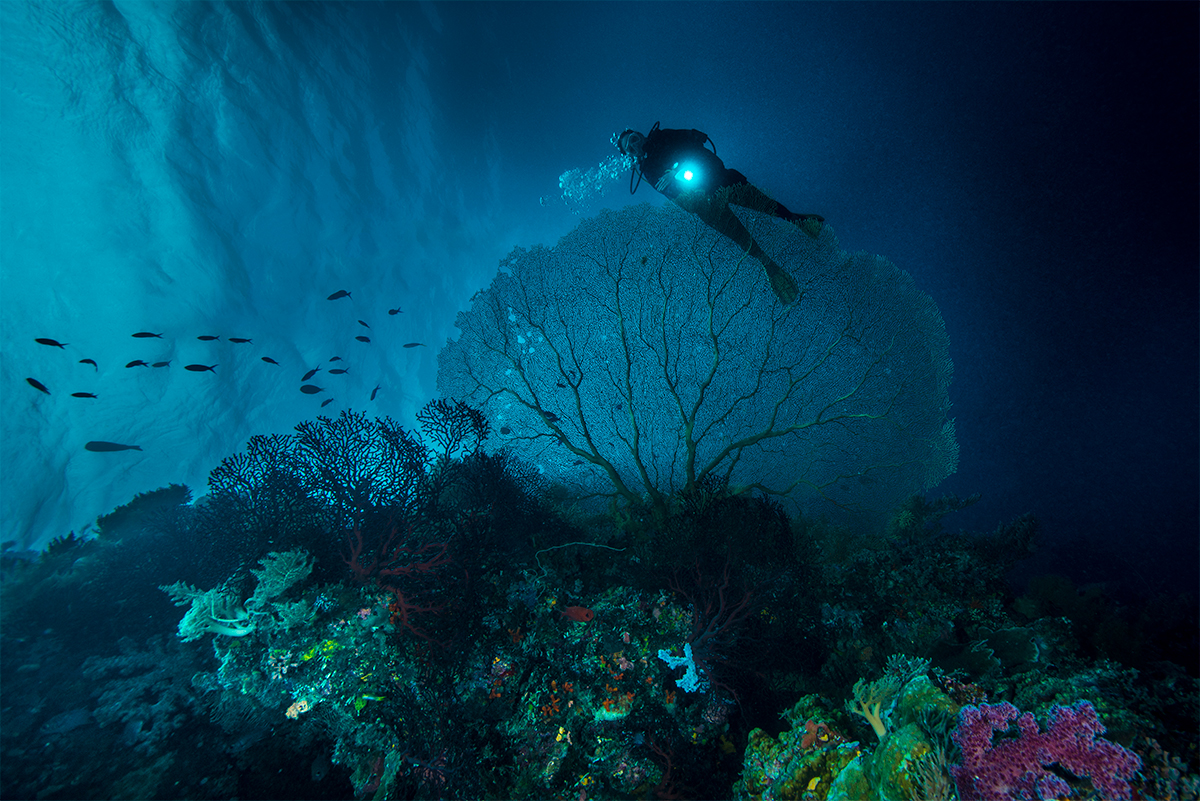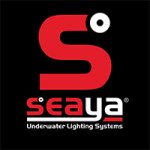
An underwater flashlight, also known as a dive light or underwater torch, is a specifically crafted and engineered to provide light in the challenging conditions of underwater environments. Underwater environments present various challenges that are not encountered in terrestrial settings. These challenges include reduced visibility due to the absorption and scattering of light in water, as well as the potential for water ingress, increased pressure at depth, and the need for specialized optics to counteract issues like backscatter. Regular flashlights may not be suitable for this purpose because they are not designed to withstand the unique challenges posed by water, including pressure, buoyancy, and potential water ingress. An underwater flashlight is equipped with a waterproof or water-resistant design to prevent water from entering and damaging its internal components. This is crucial for ensuring the functionality of the flashlight in underwater conditions and preventing it from becoming inoperable due to water exposure. This purpose-built design ensures its effectiveness and reliability in providing illumination during various water-related activities.
Underwater flashlights find applications in various water-related activities such as scuba diving, snorkeling, cave diving, underwater exploration, and night diving. Underwater flashlights are essential tools for scuba divers, enabling them to illuminate their surroundings in the depths of the ocean. These flashlights assist divers in navigating underwater landscapes, examining marine life, and reading instruments. Snorkelers often use underwater flashlights to explore shallow waters and observe marine life during low-light conditions. This enhances their visibility and allows them to appreciate the underwater environment more fully. Cave divers explore underwater caves where natural light may not reach. Underwater flashlights are crucial in this context, providing illumination to navigate through dark and confined spaces. Scientists, researchers, and underwater photographers use underwater flashlights for exploration and documentation. These lights help reveal details of the underwater environment, allowing for the study of marine life, geological formations, and other underwater features. Night diving involves exploring the underwater world after sunset. Underwater flashlights are indispensable for providing visibility during these nocturnal dives, ensuring safety and facilitating the observation of nocturnal marine species.
The use of LED technology in underwater flashlights makes a substantial contribution to their design, functionality, and overall effectiveness in underwater environments. The efficiency of LEDs is crucial for underwater flashlights, allowing them to provide bright illumination while conserving energy. As a result, LED underwater flashlights can operate for longer durations on a single set of batteries, reducing the need for frequent battery changes during dives. LED components are compact and lightweight, enabling the creation of sleek and portable underwater flashlight designs. This contributes to the overall maneuverability of the flashlight, making it easier for divers to handle and carry. The small size of LED elements also allows for integration into various underwater tools and equipment. LEDs have a longer lifespan compared to traditional incandescent bulbs. This durability is essential for underwater flashlights exposed to challenging conditions such as water pressure, temperature variations, and corrosive saltwater. LED lights can withstand these conditions, ensuring reliable performance over an extended period. LED underwater flashlights offer instant illumination without the warm-up time required by some other lighting technologies. This quick response is crucial in underwater situations, where divers may need immediate visibility. The instant on/off feature enhances the flashlight's usability in emergency scenarios or for quick inspections during dives. LED technology allows precise control over the color temperature and spectrum of the emitted light. Divers can choose or adjust the color of the light based on their preferences or the specific requirements of the underwater environment. This flexibility is beneficial for tasks such as underwater photography, where accurate color rendering is essential. LED underwater flashlights can incorporate specialized features, such as variable intensity settings, strobe modes, and color-changing options. These features enhance the versatility of the flashlight, allowing divers to adapt to different underwater scenarios and applications.
Underwater flashlights, designed for use in submerged environments such as diving or underwater exploration, typically come with specific features to meet the challenges of these conditions. High-power LEDs are commonly used as light sources in underwater flashlights. These LEDs provide bright and focused illumination, enhancing visibility in dark or murky underwater conditions. Many underwater flashlights offer adjustable brightness settings to accommodate different visibility conditions or conserve battery power when maximum brightness is not required. This feature allows users to customize the light output based on their specific needs. An emergency strobe mode, often included in underwater flashlights, can be activated to signal distress or attract attention in emergency situations. This feature enhances safety during dives and is a valuable tool for communication underwater. Adjustable beam angles allow users to modify the spread of the light beam. A narrow beam may be suitable for focusing on specific objects or distant areas, while a wider beam is useful for illuminating a larger field of view in close proximity. Some underwater flashlights come with rechargeable battery options. Rechargeable batteries are convenient for divers who may not have easy access to replacements during dives. USB charging ports or dedicated charging stations are common features for rechargeable underwater flashlights. Some underwater flashlights come with rechargeable battery options. Rechargeable batteries are convenient for divers who may not have easy access to replacements during dives. USB charging ports or dedicated charging stations are common features for rechargeable underwater flashlights.
The overall construction of underwater flashlights takes into consideration the need for waterproofing. This includes the use of materials that are resistant to corrosion and deterioration in wet environments. The seams and joints of the flashlight are carefully sealed to ensure that water cannot penetrate the interior. To prevent water from entering the flashlight and potentially causing damage to its internal components, underwater flashlights are equipped with seals and gaskets. Underwater flashlights must withstand the increased pressure experienced at greater depths. The construction and materials used in these flashlights are selected to maintain structural integrity under varying levels of underwater pressure, ensuring their reliability during deep dives. The depth rating indicates the maximum depth to which the flashlight can be submerged without compromising its functionality. Different underwater flashlights come with varying depth ratings, and users should choose a model suitable for their intended diving depths. Underwater flashlights are often constructed using corrosion-resistant materials, such as aluminum or stainless steel, to withstand exposure to saltwater. These materials help prevent rust and deterioration caused by the harsh underwater environment.












